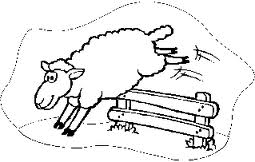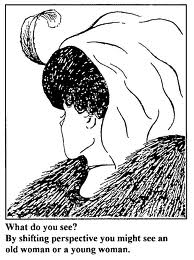
Is Change Possible?
It is my firm conviction that lasting change is a process that begins from the inside out. As I expressed in the last blog, learning to live from the heart is a discovery of who we are and what we are passionate about. This clear sense of our identity is what gives us the mojo to change. Desire and hunger are the rocket fuel that propel us towards change
Another assumption I have about change is that we need outside help to change. As part of the 12 steps towards recovery, Alcoholics Anonymous has discovered that the journey of change requires a person to recognize their need of God or a Higher Power to change.
I agree with this premise: Transformation of the heart is a God initiated transaction. Alongside God’s help to change from the inside out, the chorus from old Beatle’s song that says ‘I get by with a little help from my friends’ so aptly states our need for external help to change. This is where coaching comes in. All change requires the humility and willingness to ask for help.

Inside Out Change
With these two assumptions as the initial building blocks in the process of change, I want to discuss how change moves from the heart to our head. Once we have the motivation to change, we will need to have a change in some of our thinking.
Faulty or corrosive thinking comes from two sources: Worldviews that are formed over time as we believe and then buy into the powerful spoken or unspoken voices in our cultures of origin that tell us what is right and what is real, and Wounds that have been inflicted on our core identity. Wounds empower lies that we believe about ourselves, and are the breeding ground for crippling behaviours in our lives. These narrow and negative thought patterns are like shackles that hold us captive, keep us stuck, and keep us from the freedom of change.
The following story illustrates how faulty worldviews and wounds must be confronted to overcome negative thinking and old ways of doing things. Esther and I just watched the movie Moneyball. This is the true story of Billy Beane, a highly touted baseball prospect of the New York Mets who failed to live up to expectations, and quit playing baseball. He also experienced a broken marriage in which he had a daughter. The wounding from a baseball career that went sideways, as well as a failed marriage, fed a lie that Billy Beane was a loser and would never make anything of himself. He became the GM of the lowly small market team, the Oakland A’s (41 million payroll), a team that nearly beat out the New York Yankees (125 million payroll) in the 2002 playoffs.

Challenging Pre-Existing Worldviews
At the end of the season, the Yankees gutted the A’s by offering players such as Johnny Damon lucrative contracts that the A’s couldn’t match. Beane decide to change the paradigm of how to build a successful baseball team by hiring a Yale graduate of economics who had developed a computer generated analysis program for evaluating and drafting players. Instead of trying to compete with teams such as the Yankees in pursuing and paying huge salaries to super star players or highly touted prospects, Beane and his nerdy assistant GM started looking for players undervalued by the market. They employed the use of sabermetrics, the specialized analysis of baseball through objective, empirical evidence, specifically baseball statistics.
This strategy went against all the conventional wisdom of the baseball culture and scouting in how to form a winning team. Beane set out to challenge the then existing worldviews in baseball and face the wounds from his past failures by thinking outside the box, asking a different set of questions, and challenging the power structures in baseball. Throughout the movie Beane is constantly battling the negative thinking and fear of failure due to his past wounds. He faces those lies and overcomes. After a successful season, the Boston Red Sox organization offers him a contract of $12,500.000 to leave the A’s and apply his method in Boston. He chooses to turn the contract down in order to be closer to his daughter in California and pursue a World Series in Oakland. Two years later, the Boston Red Sox won the World Series through Bill James implementing Beane’s strategy.
Though Beane hasn’t won a World Series title yet, he has changed the worldview and culture of baseball with his courage to think differently. A line (as I remember it) from Moneyball, “The guy who breaks through the wall first gets all bloody.”
Here are some reflection questions and exercises to help you learn to think differently:
Reflections Questions:
- Where are you doing the same old thing expending more energy and resources, yet getting the same old result? Where are you stuck?
- Where do you need to ask a different set of questions to resolve an apparent problem or obstacle you are facing?
- Where are you swimming against the current of established ways of doing something, and getting some flack for it because it is threatening the ‘sacred cows’ or power structures?
- What new information is challenging your old way of doing things?

Do you see an old lady or a beautiful woman?
- What are the emotional barriers or cultural blinders such as fear of failure or pride that keep you from seeing a new reality?
- What are the negative beliefs that you believe about yourself because of some wounding to your core identity? For example: “I don’t have what it takes to….” or “I’m a loser and everything I try ends up failing, so I won’t try again.”
- What are the wounds you have experienced in your past that empower these lies?
Practical Exercises to help you think differently:
- Ask God for His power to change you from the inside out.
- Ask some trusted friends to pray with you for healing from past wounds that empower lies in your life.
- Practice risking by doing something that you fear or is outside your comfort zone, i.e. public speaking, learning to swim, eating a new type of food, or developing a friendship with someone from another culture.
- Try making your next decision through a process of filtering it through two or three different worldviews at the same time. For example, an Eastern Worldview makes decisions through the lens of what the community thinks, while a Western Worldview makes decisions through the lens of what is most important for the individual. A gatekeeper is able to think in two or three different worldviews at the same time. These folks are very effective in global business, or as cross cultural communicators.
- Make sure that in your posse of friends you have some positive people who believe in you.
- For every negative comment you make, practice saying 3 positive comments.






